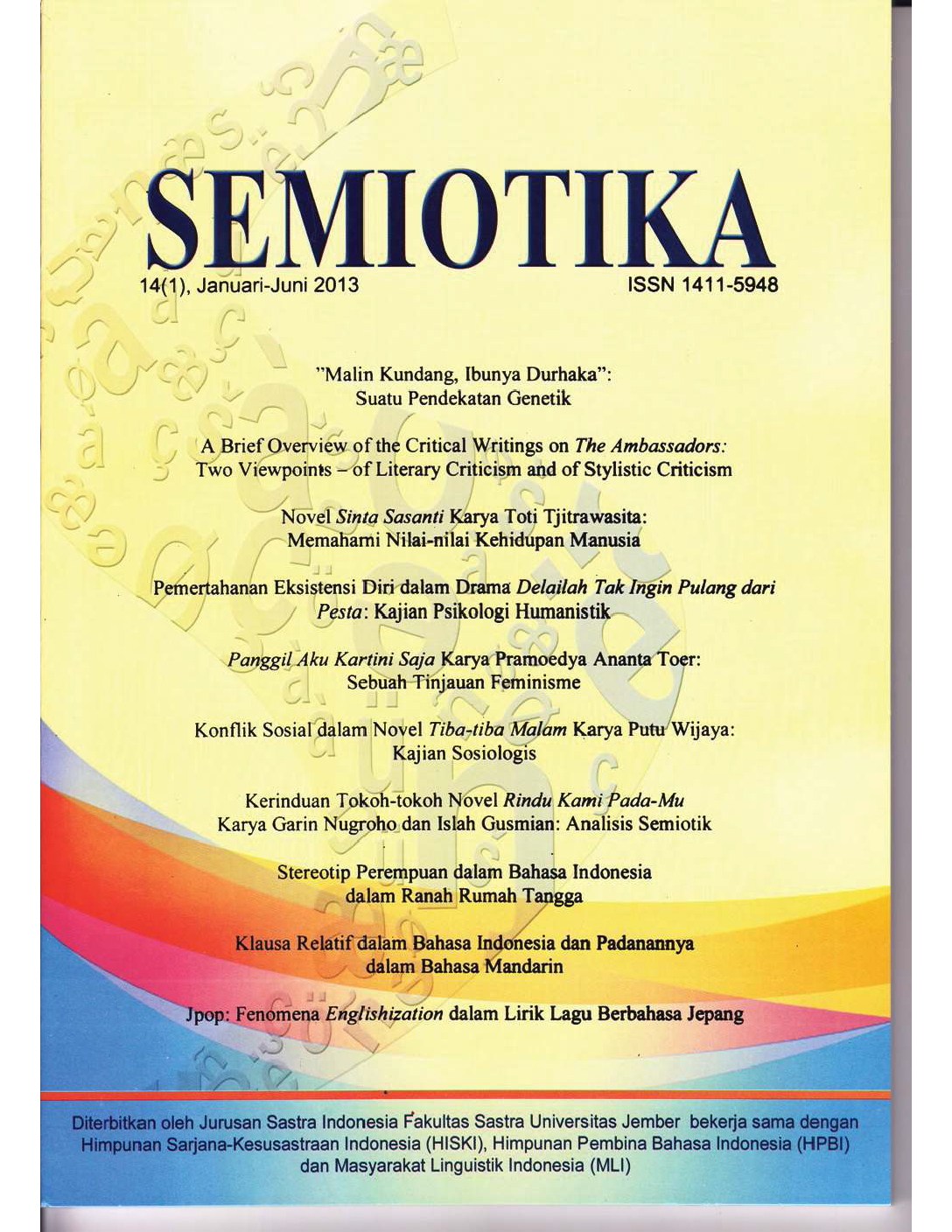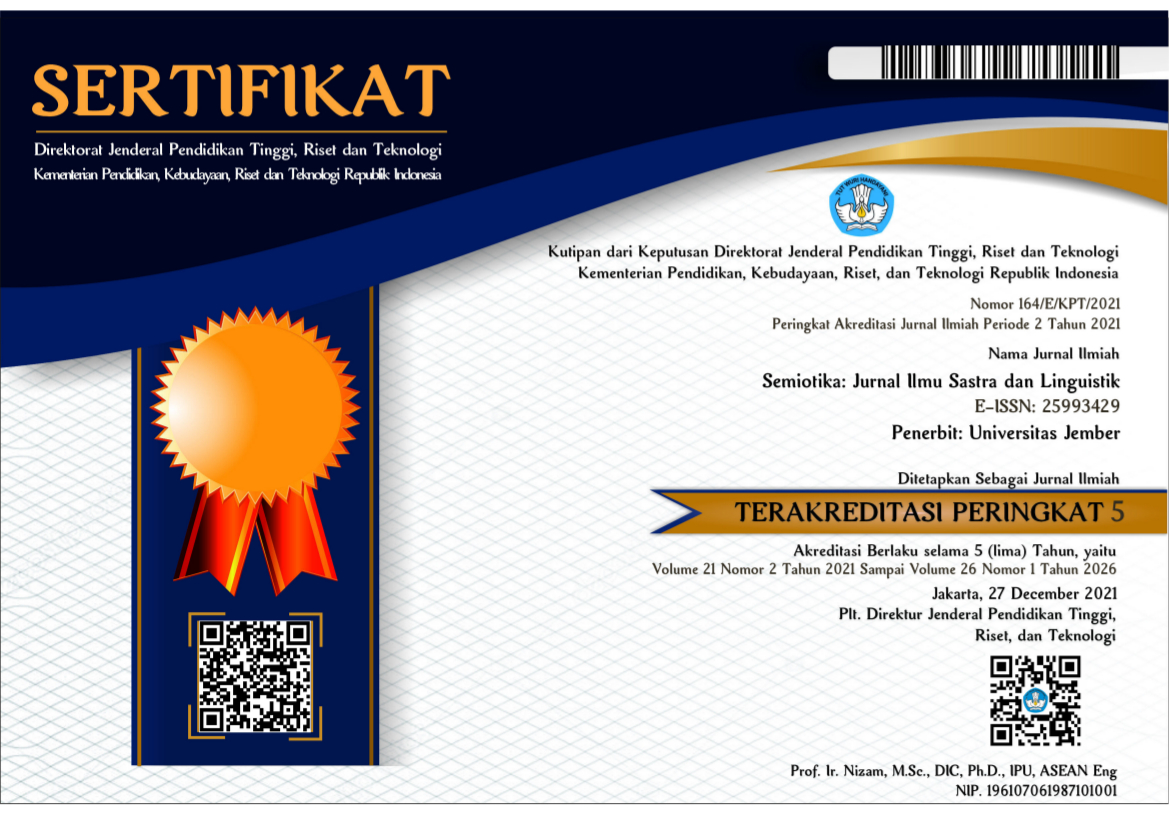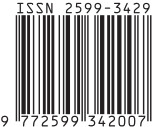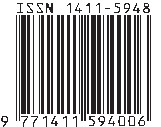Stereotip Perempuan dalam Bahasa Indonesia dalam Ranah Rumah Tangga
Abstract
Women stereotype reflected in Indonesian language shows male superiority power upon female in
society that belong to patriarchy ideology. In this kind of society female is always in a possition of
subordination which are determined by among others, history, culture, and social factors. Women
stereotype as reflected in Indonesian language were found up via vocabularies, idiom, terminology, and
taboo words. This stereotype were connected with social factors, (age, sex, education, and
employment), culture, history, as sources of explanation. Female stereotype in Indonesian language are
found in words, verbal abuse, and verbal taboos. Productive words that stereotype female in Indonesian
language are verb, noun, and adjective. The verbs are classified into the once used by adult and the
others used by children. So do the noun. While the adjective tend to be connected with characters,
physical, and women’s skill. Among three categories word mentioned above, nouns are the most
productive to mark female stereotype in Indonesian language. While idioms are found more to
stereotype female than male. Some examples for female are: jago masak, ayam kampus, daun muda,
kupu malam, ciblek, and so on. Some exemples concerning with male are: mata keranjang, jago makan,
mulut besar, and so on. Taboos and abuse words were found only used by male. These kind of words
mostly concern with human vital organ and sexuality. Social factors that influence the stereotype of
female in Indonesian are sex, education, and employment. In this case, education leaves the other two
behind significantly. The more education reason are the more aware of gender sensitive that person
level of education have negative correlation with perception on women stereotype. Others factors which
also have strong influence upon women stereotype in Indonesian language are culture, and more
specific is religion.
SEMIOTIKA has CC-BY-SA or an equivalent license as the optimal license for the publication, distribution, use, and reuse of scholarly work. Authors who publish with this journal retain copyright and grant the journal right of first publication with the work simultaneously licensed under a Creative Commons Attribution-ShareAlike 4.0 International License that allows others to share the work with an acknowledgment of the work's authorship and initial publication in this journal.
Attribution-ShareAlike
CC BY-SA










